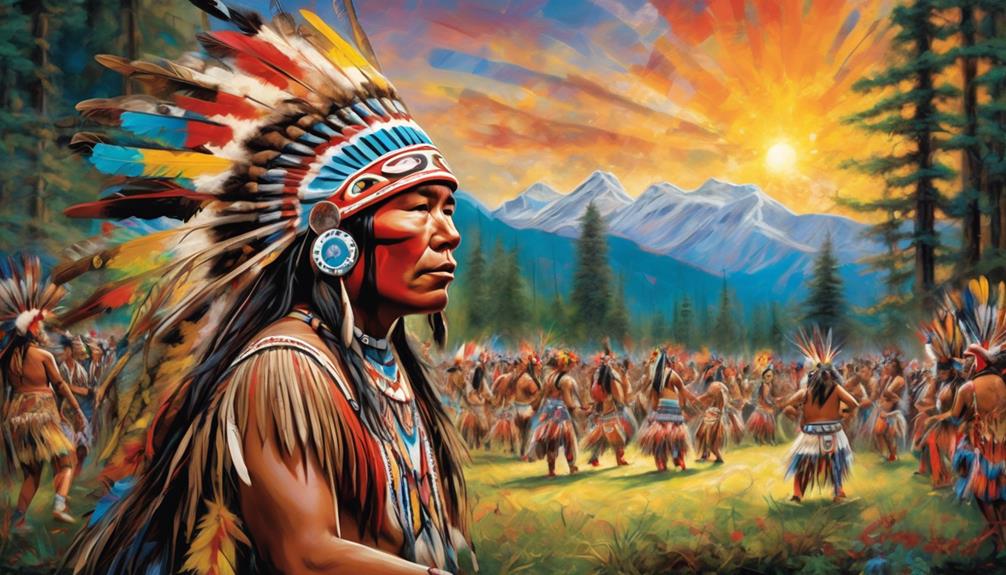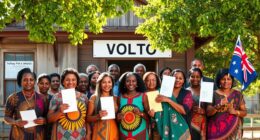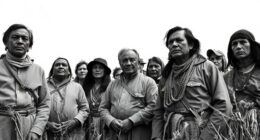The saying ‘home is where the heart is’ is familiar to many people, but for some, this concept goes beyond just emotional connection. The idea of feeling a strong connection to a particular place becomes deeply ingrained in who we are, shaping our identity and impacting all aspects of our lives.
But what does it truly mean to be native to a place, and how does it impact our sense of self and belonging?
Join me as we explore the intricate layers of native identity, delving into the profound connection to the land, the preservation of cultural heritage and traditions, and the profound impact on personal identity and community.
Key Takeaways
- Native identity is shaped by cultural assimilation and resistance to dominant culture norms.
- Native identity is intricately tied to the land and includes a spiritual and cultural relationship with it.
- Cultural preservation safeguards ancestral customs and traditions, providing a sense of belonging and shaping personal identity.
- Belonging to a community enriches lives through mutual support, shared experiences, and the sense of purpose and identity it provides.
Understanding Native Identity
Understanding Native Identity involves recognizing the rich, nuanced tapestry of cultural and historical experiences that contribute to an individual's sense of self within their indigenous community. For Native peoples, cultural assimilation has been a pervasive force, shaping the way many navigate their identity. The pressure to conform to dominant culture norms has often led to a complex interplay of adaptation and resistance, resulting in a distinct identity that's both deeply rooted and dynamically evolving.
Historical trauma, stemming from centuries of colonization, forced relocation, and systemic oppression, has profoundly impacted Native communities. This shared history of adversity has engendered a collective resilience, a strength that's woven into the fabric of Native identity. While historical trauma has undoubtedly left scars, it has also fostered a deep sense of solidarity and kinship among Native peoples.
In understanding Native identity, it becomes evident that the process of self-discovery isn't simply an individual journey, but one shaped by the collective experiences of an entire community. It's a journey marked by the complexities of cultural assimilation and the enduring resilience in the face of historical trauma.
Connection to the Land

Native identity, deeply rooted in historical trauma and resilience, is intricately tied to our connection to the land, shaping our sense of self and community in profound ways. Our connection to the land goes beyond mere physical presence; it embodies a spiritual and cultural relationship that has sustained us for generations.
As indigenous peoples, our understanding of land stewardship and environmental responsibility is deeply ingrained in our traditions and knowledge systems. We've long recognized the interconnectedness of all living beings and the need for harmony with the natural world. Our practices, such as traditional agriculture and wildlife conservation, reflect a profound respect for the land and its resources.
This connection to the land not only provides us with sustenance but also informs our values, guiding our actions as responsible custodians of the environment. Our deep-rooted connection to the land serves as a reminder of our inherent responsibility to protect and preserve the Earth for future generations, transcending individual interests for the collective well-being of all life.
Cultural Heritage and Traditions
Embedded within our cultural heritage and traditions are the stories of our ancestors, the rituals that bind us together, and the wisdom that has guided us through generations. Cultural preservation is essential in safeguarding our ancestral customs, ensuring that the rich tapestry of our traditions remains intact for future generations. Our cultural heritage provides us with a sense of belonging, connecting us to our roots and shaping our identities. It's through the preservation of our ancestral customs that we can honor the legacy of those who came before us, carrying forward the values and practices that define our community.
Comparatively, our traditions serve as a link between the past and the present, offering us insight into the lives of our predecessors and the societal norms that governed their existence. By understanding and embracing our cultural heritage, we gain a deeper appreciation for the experiences that have shaped our community. Through the continuation of these traditions, we not only celebrate our collective history but also foster a sense of unity and solidarity among our people.
Impact on Personal Identity

Our personal identities are intricately woven into the fabric of our cultural heritage and traditions, shaping who we are and how we perceive the world around us. Identity formation is deeply influenced by the environment in which we grow up, the customs we adhere to, and the values we inherit.
For individuals native to a place, this process tends to be more organic, as their cultural adaptation is an inherent part of their upbringing. The sense of belonging and rootedness that comes from being connected to one's native culture fosters a strong sense of self and community.
In contrast, those who experience displacement from their native culture may struggle with a sense of loss of connection and identity. The unfamiliarity of a new culture can lead to a profound internal conflict as they navigate between holding onto their roots and embracing the new environment. This struggle can sometimes result in a fragmented sense of self.
For those of us who are native to a place, the deep connection to our cultural heritage and traditions provides a strong foundation for our personal identity, fostering a sense of belonging and continuity.
Sense of Belonging and Community
Feeling a strong sense of belonging and community, individuals native to a place are often deeply rooted in their cultural heritage, providing a solid foundation for their personal identity. This deep connection fosters a profound feeling of community support, where individuals can rely on each other during times of need, creating a strong sense of belonging. The shared experiences within the community further solidify this bond, leading to a sense of solidarity that transcends individual differences.
- Community Support and Belonging:
- Communities offer a network of support that provides a safety net for individuals, cultivating a feeling of security and inclusion.
- Belonging to a community allows individuals to feel valued and understood, contributing to a sense of purpose and identity.
- Shared Experiences and Solidarity:
- Shared experiences, whether joyful or challenging, create a sense of unity and empathy within the community.
- Solidarity emerges from the collective strength and resilience displayed during times of adversity, reinforcing the bond among community members.
In essence, the sense of belonging and community among individuals native to a place is a powerful force, shaping their identities and enriching their lives through mutual support and shared experiences.
Frequently Asked Questions
How Does Being Native to a Place Impact Local Environmental Conservation Efforts?
Being native to a place deeply impacts local environmental conservation efforts. Our native identity and cultural traditions are intricately tied to the land, motivating us to preserve it.
Through heritage preservation, we maintain a deep connection to the local environment. This connection drives our commitment to conservation, which in turn supports economic development, employment opportunities, and the preservation of native languages and cultural heritage.
What Are Some Common Misconceptions About Native Identity and Heritage?
Misconceptions about native identity and heritage often stem from a lack of understanding. Assumptions about uniformity ignore the diversity within native communities.
Many misconceptions arise from historical narratives that prioritize assimilation over preserving distinct cultural identities. It's crucial to acknowledge the complexities and variations within native identities and heritage, rather than succumbing to oversimplified generalizations.
Understanding these misconceptions is essential for fostering genuine respect and appreciation for native cultures.
In What Ways Do Native Communities Adapt to Modern Society While Preserving Their Cultural Traditions?
Adapting to modern society while preserving cultural traditions is a delicate balance for native communities. It's fascinating that 82% of Native Americans live in urban areas, highlighting their effort to integrate socially while upholding their heritage.
Cultural preservation involves language revitalization, traditional ceremonies, and passing down knowledge through generations.
Social integration includes active participation in mainstream society without compromising cultural identity, fostering a rich and diverse community.
How Do Native Communities Address Challenges Related to Economic Development and Employment Opportunities?
Addressing economic challenges, native communities prioritize economic empowerment through workforce development programs. These initiatives aim to equip community members with skills and resources to pursue meaningful employment opportunities.
By investing in vocational training and entrepreneurship support, these communities strive to create sustainable economic growth while preserving their cultural traditions.
This approach underscores the resilience and adaptability of native communities in navigating modern economic landscapes while staying true to their heritage.
What Role Do Native Languages Play in Maintaining Cultural Heritage and Identity?
Native languages play a pivotal role in preserving cultural heritage and identity. Through language revitalization efforts, we prioritize the preservation of traditional knowledge and values. This is crucial for the conservation of our cultural heritage.
Additionally, native languages serve as a unifying force, connecting us to our ancestors and reinforcing our collective identity. Their preservation is essential for maintaining our unique cultural legacy and passing it down to future generations.
Conclusion
In conclusion, our native identity is like the roots of a sturdy tree, firmly planted in the soil of our ancestors' land. It grounds us, nourishes us, and connects us to our cultural heritage and traditions.
It shapes our personal identity and gives us a sense of belonging and community. Like the branches and leaves of the tree, our native identity reaches out and extends, weaving a complex and beautiful tapestry of who we're and where we come from.









